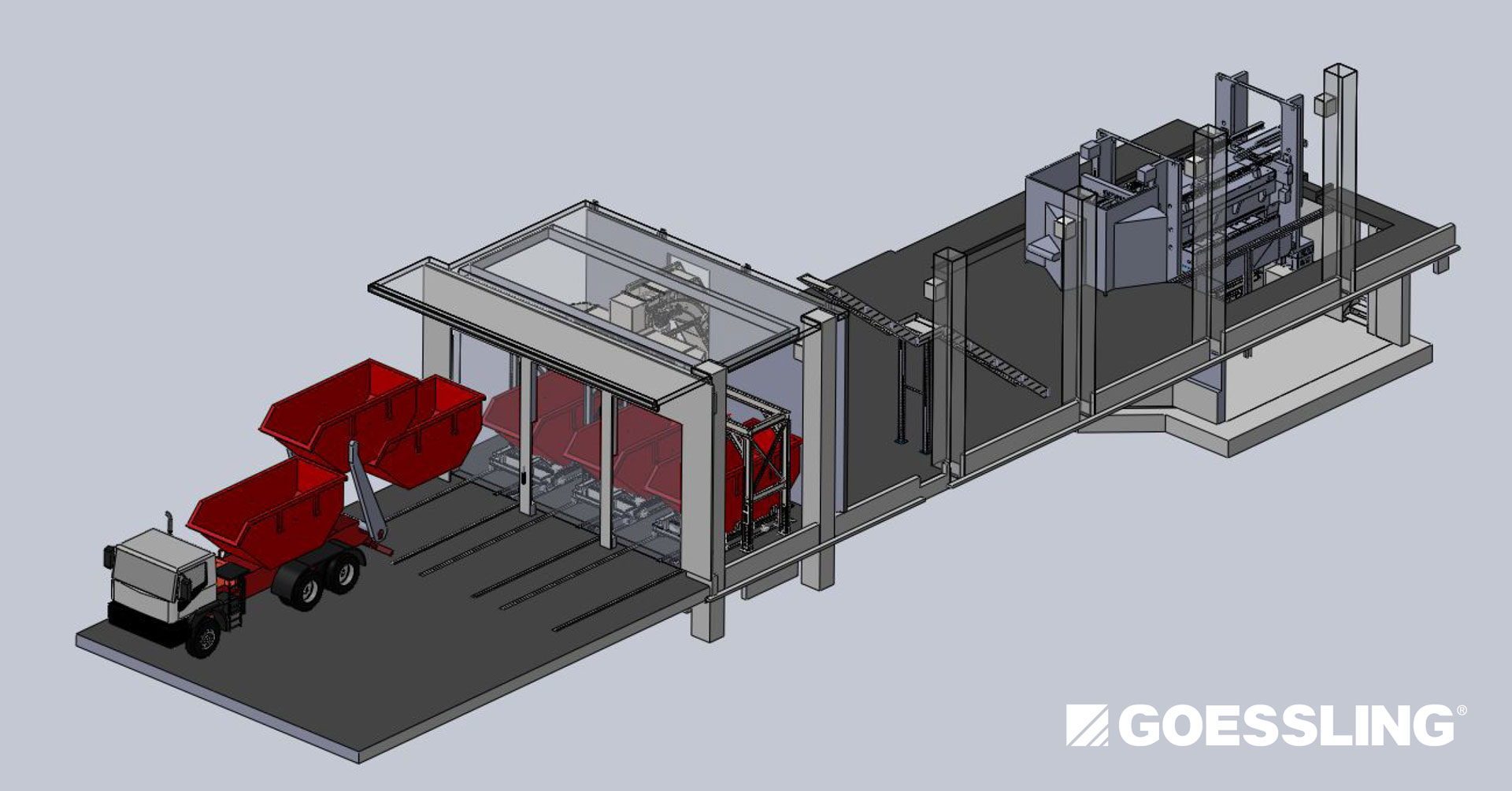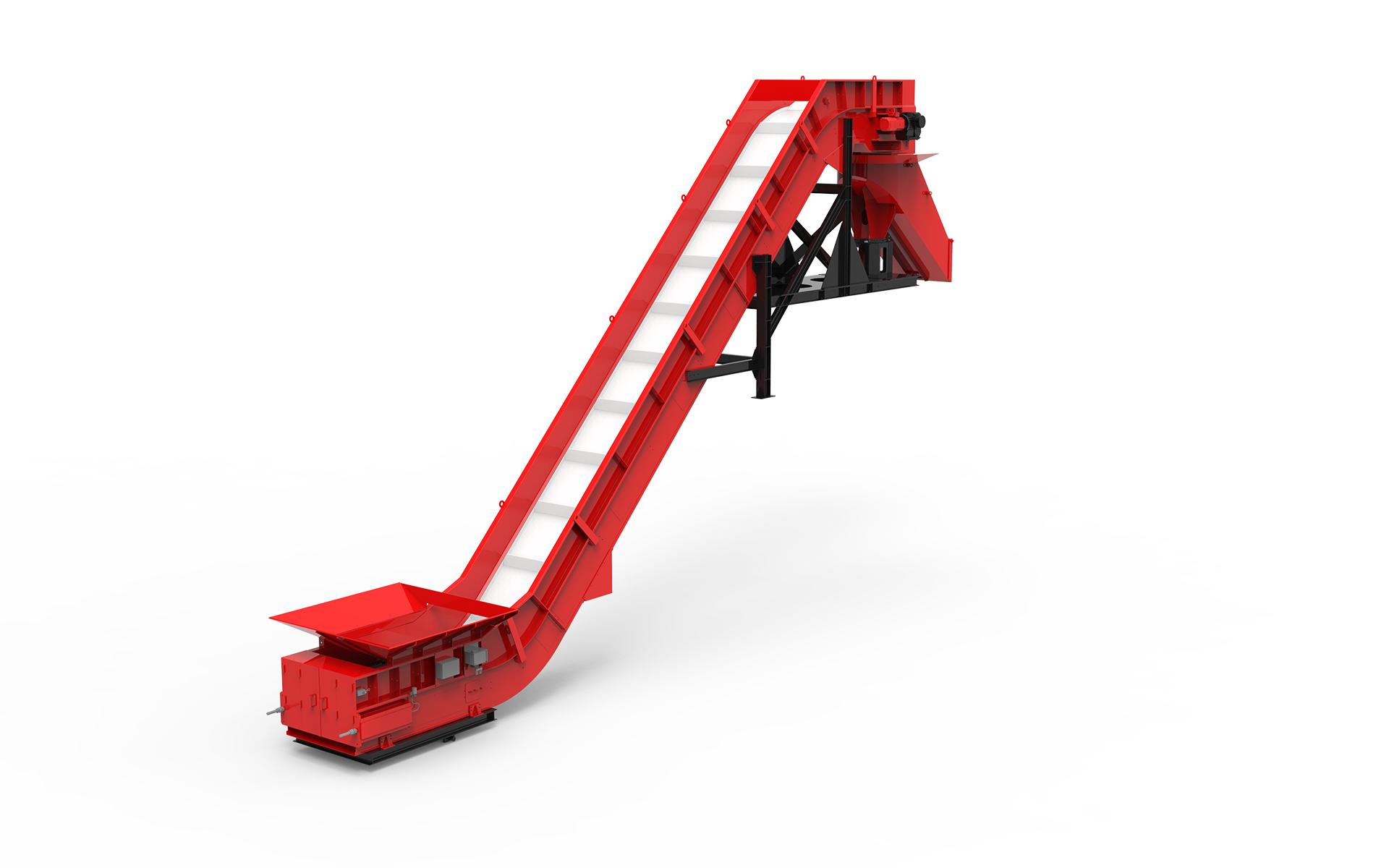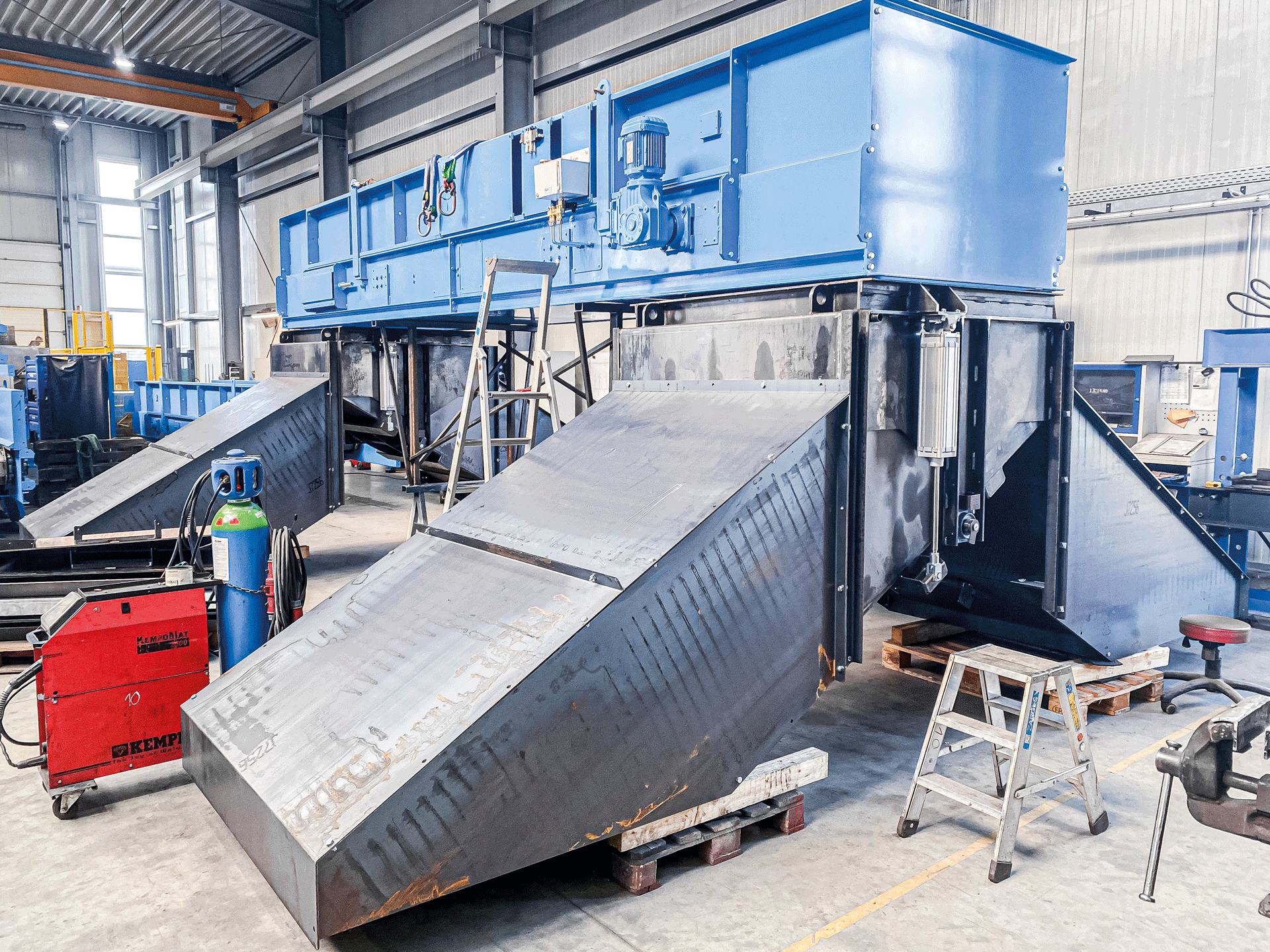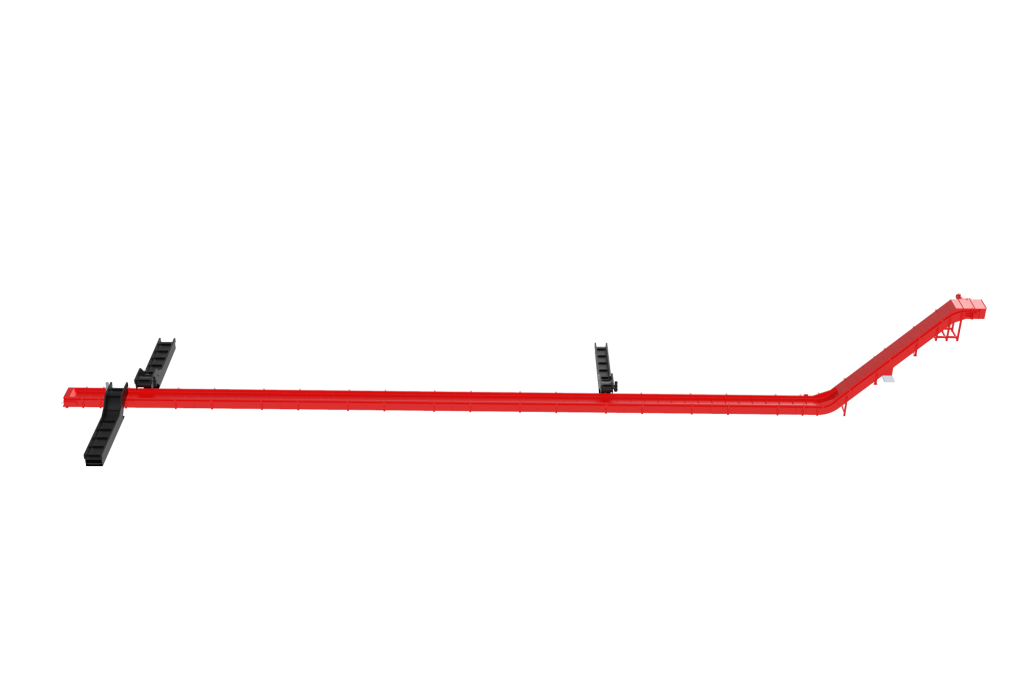STAMPING INDUSTRY
Scrap disposal with
three movable containers

GOESSLING Conveying Technology for stamping scrap in chassis
manufacturing.
![]()
This year in September, the division GOESSLING delivered a customized conveying solution to a long-term client that once again relied on the high quality and positive user experience.
When manufacturing chassis parts, stamping scrap occurs beneath the stamping press. These scrap parts must be disposed in containers. Using their experience in GOESSLING conveying technology, JOEST was able to offer the client a robust solution with excellent service.
The special challenge of this project was that the stamping scrap is charged over a special chute system in the basement onto a Double-Z-Conveyor with an effective width of 625 mm. The scrap is then transferred on a reversible conveyor with the same effective width. At the the transitions, the reversible conveyor has pivoting chutes. The both pivoting slides enable the oily scraps to be distributed into three displaceable containers.
The conveying system, made from aluminum, steel, stainless-steel and galvanized sheet metal is low-maintenance and is delivered in an oil-tight configuration. Stamping scrap can be conveyed at a throughput of four to six tons per hour.
Weitere Beiträge
As part of the JOEST group, MOGENSEN has been a trusted provider of high-performance screening and sorting technologies for many years. The new website now showcases this expertise more clearly and with a modern touch.
On International Women’s Day, we celebrated the great women in our company who have made a significant contribution every day with their commitment, expertise and passion. Their efforts have been a driving force behind our success and an inspiration to us all.
JOEST South Africa was commissioned to manufacture and supply replacement vibrating feeders for a critical power generation facility. The new units are designed to replace equipment that had been in operation for over 20 years, ensuring the continued reliability and efficiency of the plant.
MOGENSEN joins China’s food security project as an official supplier, supporting the nation’s plans to strengthen domestic grain production capabilities. The appointment by COFCO, China’s largest state-owned agricultural company, includes the deployment of multiple precision screening systems for processing rice, wheat and soybeans, among other grains. This long-term initiative is in line with China’s new food security law, which went into effect on June 1, 2024.







